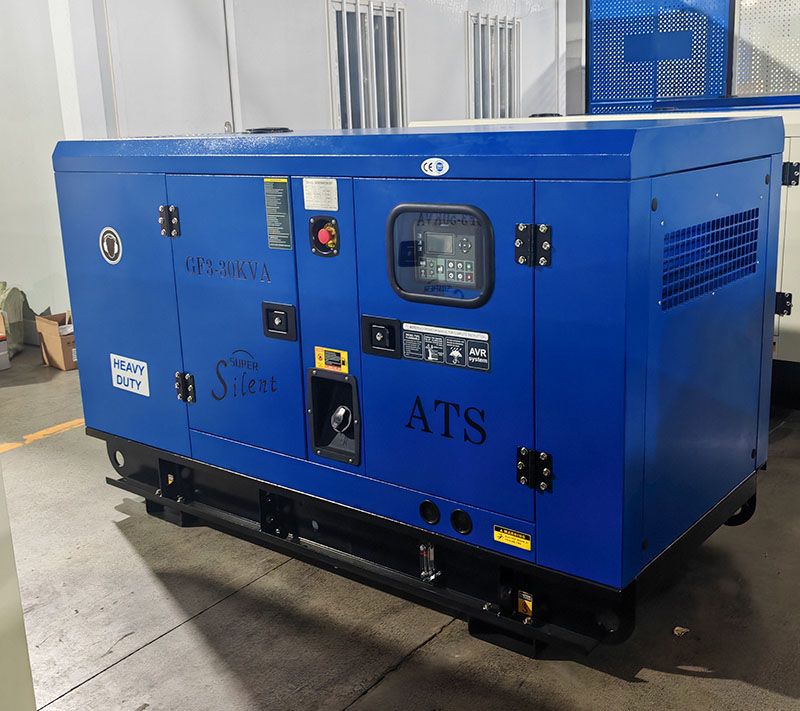Auxiliary Power for Renewable Energy Projects: Generator Sets Support Wind, Solar, and Storage Development
Release time:2025-09-30 Click:16
Reliable and continuous power is critical for modern renewable energy projects, including wind, solar, and storage systems. While these sources provide clean energy, their intermittent nature can cause operational challenges. Generator sets as auxiliary power are essential to ensure uninterrupted supply, grid stability, and efficient operation. This article explores the benefits, applications, technical features, and frequently asked questions about generator sets in renewable energy projects.
1. Importance of Auxiliary Power in Renewable Energy
Renewable sources like wind turbines and solar photovoltaic systems fluctuate due to weather and seasonal variations. Key challenges include grid instability, energy storage charging requirements, backup power for critical operations, and voltage and frequency regulation in hybrid energy systems. Generator sets provide reliable auxiliary or backup power, ensuring smooth and continuous operations even when natural resources are insufficient.
2. Advantages of Generator Sets in Renewable Projects
Reliability: Continuous power supply for energy storage and auxiliary operations.
Flexibility: Supports off-grid, microgrid, and hybrid renewable applications.
Scalability: Generator capacity can be tailored to project size.
Rapid Response: Compensates for intermittent generation, stabilizing grid or microgrid.
Efficiency: High fuel efficiency and reduced consumption.
Low Maintenance: Robust engines ensure long-term reliability for remote installations.

3. Applications in Wind, Solar, and Energy Storage
Solar Farms: Auxiliary generators maintain energy supply during low sunlight or nighttime.
Wind Farms: Compensates for low wind speeds, supporting continuous output.
Hybrid Energy Systems: Balances intermittent renewables and storage to meet demand.
Off-Grid Installations: Provides reliable backup in remote locations.
Microgrid Support: Stabilizes voltage and frequency in renewable-powered microgrids.
Energy Storage Management: Controlled battery charging during peak demand or low renewable output.
4. Key Features of Modern Generator Sets
Fuel Flexibility: Diesel, gas, or dual-fuel options.
Automated Start/Stop: Responds automatically to energy deficits.
Smart Control Systems: Real-time monitoring and remote operation.
Durable Construction: Weather-resistant and suitable for outdoor use.
Load Sharing and Synchronization: Multiple units can operate in parallel.
Emission Compliance: Low-emission engines meeting environmental standards.
5. Frequently Asked Questions (FAQs)
Q: Why are generator sets necessary for renewable energy projects?
A: Renewable sources like wind and solar are intermittent. Generators ensure continuous supply and stabilize grid or microgrid operations.
Q: Can generator sets work with battery storage systems?
A: Yes, generators can charge batteries when renewable output is insufficient, ensuring energy availability for critical loads.
Q: Are these systems cost-effective?
A: While initial investment exists, generator sets reduce downtime, prevent revenue loss, and optimize hybrid energy efficiency.
Q: How do generators support microgrid stability?
A: By providing quick response to load fluctuations, generators stabilize voltage and frequency for smooth operation of connected systems.
Q: Are renewable project generators environmentally friendly?
A: Modern units meet strict emission standards and can integrate with cleaner fuels and hybrid energy systems.
6. Benefits for Renewable Project Operators
Continuous Operation: Minimizes downtime during low wind or sunlight.
Enhanced Grid Reliability: Supports integration into industrial or community grids.
Cost Optimization: Efficient operation reduces fuel and operational costs.
Operational Flexibility: Scalable systems accommodate expansions and hybrid integration.
Remote Monitoring and Control: Advanced automation allows efficient management of generators in remote areas.
7. Market Trends and Development
Growth in Hybrid Systems: Integration with solar, wind, and storage provides stable energy.
IoT and Smart Controls: Real-time monitoring enhances efficiency, predictive maintenance, and energy management.
Energy Storage Integration: Supports battery systems, optimizing charging/discharging cycles.
Remote and Off-Grid Expansion: Increased deployment in areas without reliable grid access.
Sustainable Power Solutions: Development of low-emission, fuel-efficient generator sets.
8. Challenges and Solutions
Challenge: Fuel costs and operational expenses.
Solution: Combine generators with renewable sources to minimize fuel usage.
Challenge: Emissions and environmental compliance.
Solution: Deploy low-emission engines, dual-fuel systems, and hybrid operation strategies.
Challenge: Synchronization with complex renewable systems.
Solution: Use advanced control and monitoring technologies for smooth integration with storage and hybrid grids.
9. Conclusion
Auxiliary generator sets are essential for efficient operation of renewable energy projects including wind, solar, and storage systems. They provide reliable, scalable, and efficient power, ensuring continuous operation, grid stability, and optimal performance. By integrating generator sets with smart controls and hybrid strategies, renewable projects achieve high reliability and sustainability, supporting the global transition to clean energy solutions.
Hot products
+86 15244567972
Contacts:Jack
